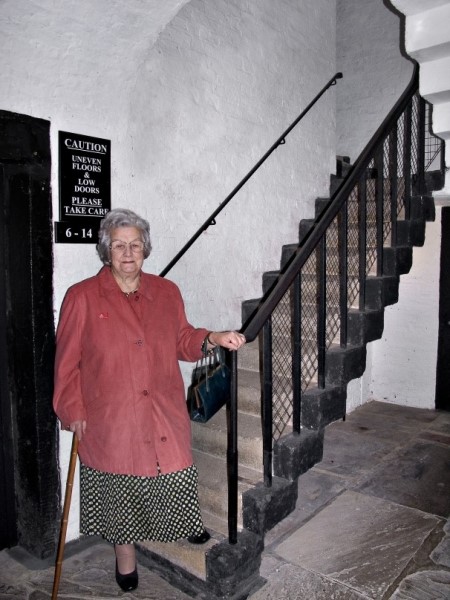
Photograph of Winifred Lindsay Visiting to Prison and Police Museum 2005 Winifred Lindsay, first WAPC (Women’s Auxiliary Police Corps) member based at Ripon Police Station during the Second World War. It was her responsibility to sound the siren whenever the phone on her desk flashed red. She recalled that Inspector Derbyshire lived in the house adjacent to the station and his wife was responsible for feeding prisoners and cleaning cells. She often had young women coming in to report maltreatment by their husbands. It was stressful incidents like this that caused her to resign in 1945.